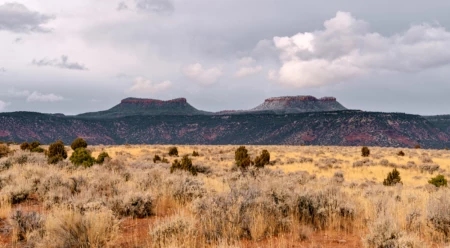Celebrate Bears Ears
Three years ago, on December 28, 2016, President Obama used his executive power under the Antiquities Act to establish the 1.35 million-acre Bears Ears National Monument. This was the first time that tribal sovereign nations allied to petition the president for a national monument designation. The Hopi Tribe, the Navajo Nation, the Ute Mountain Ute Tribe, the Pueblo of Zuni and the Ute Indian Tribe had worked for years to achieve protection for their sacred homelands in what is now southeast Utah. These five tribal nations now make up the Bears Ears Inter-Tribal Coalition, whose mission is to ensure that the Bears Ears landscape will be protected with the greatest environmental and cultural sensitivity for future generations.
Obama’s presidential proclamation ruled that Bears Ears would be preserved through collaborative management between the five Tribes and the federal government, and determined that tribal leaders would work as equals with federal officials to establish holistic protections for the region’s natural, cultural, historic and scientific resources.
Less than one year later, the Trump administration carried out the largest public land reduction in the country’s history, and unlawfully attempted to revoke and replace the Bears Ears monument with two, much smaller monument “units.” In total, the protected area was reduced by 85 percent. The five coalition Tribes sued President Trump to have the revocation of the monument declared illegal. (Patagonia is a party in one of three pending lawsuits in this matter). As litigation carries on, Bears Ears’ cultural and natural resources remain at risk of looting, vandalism and exploitation.
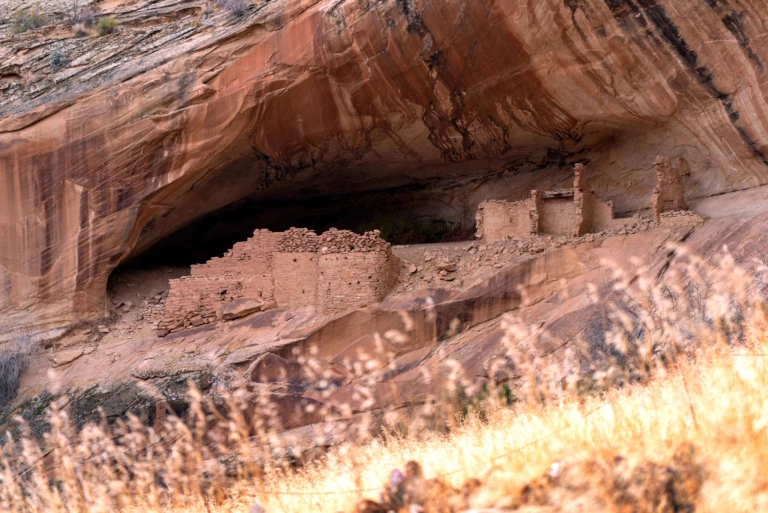
Ancestral dwellings in Bears Ears. Typically, these homes were oriented to favor a southern exposure in order to get the most warmth from the winter sun. Photo: Michael Estrada
To mark the third anniversary of the original establishment of the Bears Ears National Monument, we interviewed Vice Chairman Clark Tenakhongva of the Hopi Tribe and representative for the Inter-Tribal Coalition about why he believes Bears Ears needs to be protected.
This interview has been edited and condensed for clarity.
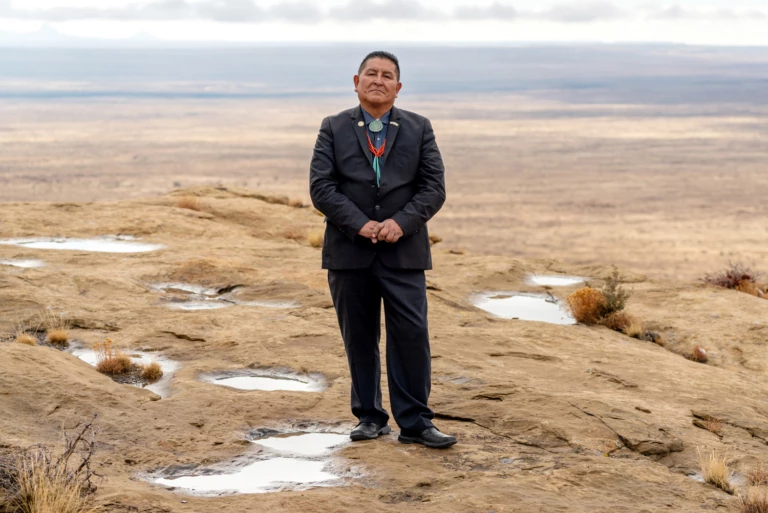
Clark Tenakhongva is the Vice Chairman of the Hopi Tribe and serves as a Hopi representative for the Bears Ears Inter-Tribal Coalition. Tenakhongva is from the Third Mesa village of Ho’atvela and belongs to the Rabbit and Tobacco Clans. He is a traditional farmer, rancher, veteran, artist and musician. This photo was taken on Hopi lands, in what is now Arizona. Photo: Michael Estrada
Cassaundra Pino: What is the significance of this place to you and to the Hopi Tribe?
Clark Tenakhongva: Hopi is still alive. We are still practicing that same religion and culture as we did in Bears Ears thousands of years ago. The history of Hopi is well written and documented there—our kivas, our dwellings and our rock walls exist today. And when we left, we left evidence of our time in those sacred places so that we would always know we were there. Those locations are still mentioned in our ceremonies. We know there is a reason why we migrated through that region. We know the reasons why we are here today as Hopi, still speaking that language and honoring the stewardship covenant we made with the Creator. My vision as vice chairman is to educate the public on why the Bears Ears landscape is worth protecting.
Why did the five coalition Tribes find it important to come together in 2015 to protect Bears Ears and propose it become a national monument?
Each Tribe has their own reasons to protect this area. For the Hopi, Bears Ears is part of an ancestral migration route some Hopi clans embarked upon, coming eventually to where we are today. Other Tribes also came into the area. They occupied the dwellings that were left for them, and they made their own journeys throughout the land. You have the Pueblo people. You have the Ute people. You have the Diné (Navajo) people. Bears Ears has always been a safe haven, a place of protection. Every place you go, you will find—on the walls, inside the dwellings, somewhere around the springs—markings of who was there. It has its beauty; it has its values; it has its significance as far as being a spiritual place, a place of worship. Our ancestors and their spirits still live there. We have a lot to lose if it is not properly preserved.
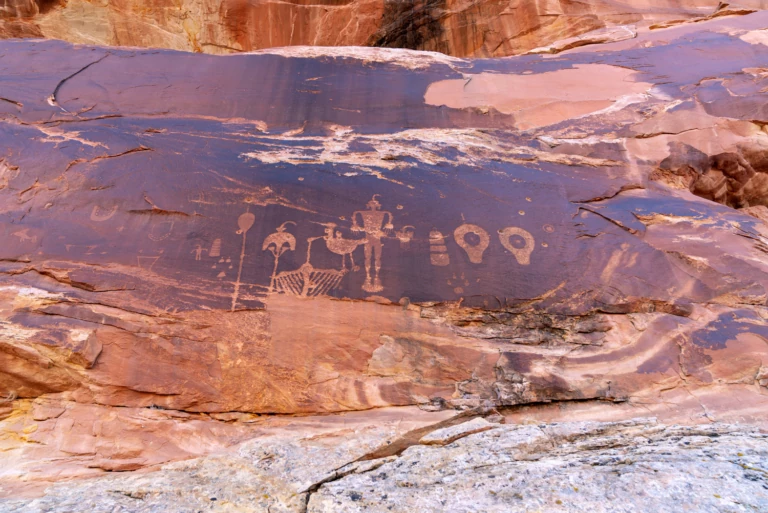
A sacred panel that has been marred by bullet holes. There are more than 100,000 cultural sites in Bears Ears. The region was recently named one of the most endangered cultural heritage sites in the world. Photo: Michael Estrada
The coalition just announced it began its Native-led land-planning effort, with all five Tribes working together on one document. Can you share a little bit about this plan?
From the Hopi perspective, it’s about protecting the entire area. Under this plan, Tribal leadership, cultural advisors, Tribal resource departments and Tribal community members will work together to create an Indigenous-informed land management document. Our goal is to create a plan that actively promotes tribal Traditional Knowledge and Native expertise. This approach is important because federal agencies largely prioritize western science to manage land. Instead, we are taking a holistic approach by bolstering traditional knowledge and incorporating western science. This will enrich future planning efforts to preserve this sacred landscape. Although we are working on this collective effort together, we are respecting our distinctions as Tribes. This means that what the Navajo Nation, what the Utes, what the Pueblos, and what we as Hopi consider important may differ or overlap. We will include all of our values and ideas into this plan to ensure that it is respectful to each member tribe.
One of the coalition’s goals is to have this document serve as a model for Indigenous nations all around the world. How is the issue of protecting Bears Ears part of the global Indigenous story to protect living landscapes?
Today, we fight different battles than we once did—not on the land, but within court houses. Everything is fought in litigation throughout the court system. So, with this Indigenous land management model, if we are very successful at it, other nations around the globe can say, “Look, in America, there were five Tribes that came together to solicit their government to protect their homelands. The government recognized the significance of this landscape and turned it into a national monument.”
What are some imminent threats to Bears Ears you are most worried about?
There are hundreds of thousands of cultural objects in Bears Ears, and, unfortunately, over the years, more people have been removing artifacts from the landscape. Visitors come upon historic items—like pottery pieces, corn cobs, or building materials—and they find them interesting and small enough to carry. They want a souvenir from their time in Bears Ears, so they take those things. But when they do that, they chip away at the significance of this place; they erase Native history and sever the connections between Indigenous people today and their ancestors. When our people, and other Indigenous communities, return to Bears Ears today, we are finding less and less of the items left behind by our ancestors—it hurts. The Hopi believe that we left those things behind for a reason. Our ancestors marked their presence throughout the region by leaving behind evidence. In some cases, those objects are part of the burial process. Visitors should not be taking anything from sacred sites.
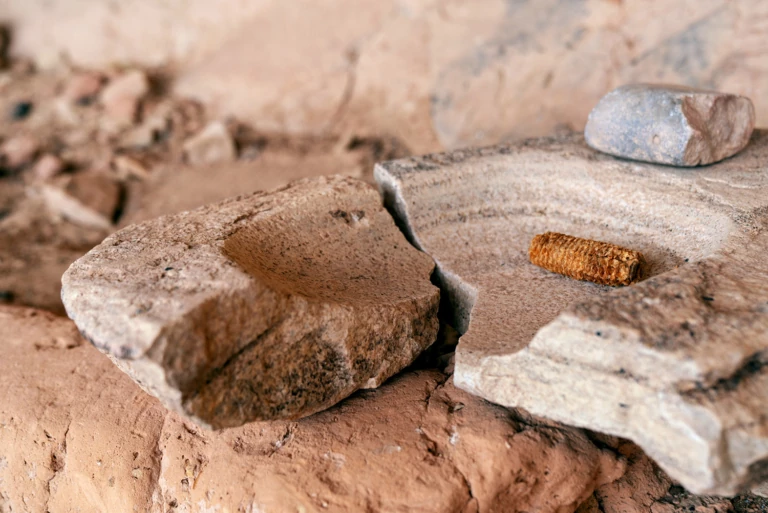
A corn cob rests atop a cracked grinding stone with another stone placed just above. Photo: Michael Estrada
What should visitors know and how can people protect Bears Ears?
My words to them: Tread lightly, but most importantly, visit with respect. Look at the landscape and imagine that thousands of years ago, there were people who inhabited those areas and the land was left unharmed. Those people lived in harmony with the land, and for the Hopi side of it, they had very special techniques of how to survive. They built granaries and cliff dwellings in places that most people can’t climb. But today hikers and climbers like to use these areas. You can repel anyplace else, but please, leave those places alone. If you should have that opportunity to hike and see a site, you don’t need to touch anything. Simply look upon it from a distance. You don’t need to go inside any of those dwellings up there, they are very fragile. Respect this place: Do your prayers, do your offerings, and enjoy its beauty. Appreciate the significance of how Indigenous people survived in the region. Value those things and say, “I am glad to have experienced a part of America’s true history.” Bears Ears is just like everywhere else you visit—you go in there with respect.
Tips for visiting Bears Ears:
Bears Ears is currently without the protection it needs to properly preserve the more than 100,000 cultural sites located within the region. This landscape was recently named to the 2020 World Monuments Watch List as one of the most endangered cultural heritage sites in the world. Follow these tips to honor Indigenous peoples and their connections to the land when visiting Bears Ears:
- Stop by Friends of Cedar Mesa’s Bears Ears Education Center, located in Bluff, Utah, before heading out into the landscape. This non-profit organization helps visitors understand respectful behaviors to practice within the region, and their staff is working on the ground to help mitigate looting, vandalism, and destruction of sites.
- Stay on designated paths and roads.
- Pack out what you pack in. This includes all types of waste. Discarded human waste is a huge problem in Bears Ears. This also applies to your furry friends.
- If you come upon a cultural site, please enjoy it from afar.
- Please don’t climb on ancestral structures or disturb kivas. They are thousands of years old and very fragile.
- Please leave all cultural objects as you found them. Taking artifacts—such as pottery pieces—contributes to the erasure of Indigenous history.
- Please be mindful that many sites, objects and rock art are still used in current religious customs and practices. As such, some Indigenous communities consider site disturbance, such as walking through a cliff dwelling, to be disrespectful and even harmful in some instances. Help us keep these sacred resources intact and treat them as you would a place of worship.
Learn more about what the Coalition is working on at Bears Ears Inter-Tribal Coalition.
